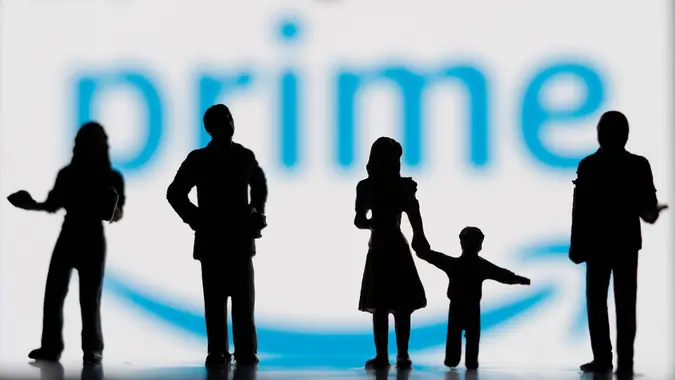4 Expenses Experts Say You Can Easily Cut in Half

Commitment to Our Readers
GOBankingRates' editorial team is committed to bringing you unbiased reviews and information. We use data-driven methodologies to evaluate financial products and services - our reviews and ratings are not influenced by advertisers. You can read more about our editorial guidelines and our products and services review methodology.

20 Years
Helping You Live Richer

Reviewed
by Experts

Trusted by
Millions of Readers
If your budget is stretched to its limits, you can get some relief by reducing expenses. But where should you start?
Mike Sullivan, personal financial consultant and spokesperson for Take Charge America, a leading nonprofit credit counseling and debt management agency, said that while it’s possible to save 50% on budget line items, like clothing and entertainment, if you want to save real money, you should look first at where most of your dollars are spent.
“Although there are many consumers living paycheck to paycheck with few ways to economize, there are more who are living ‘the American Dream’ by spending far more than they need to,” he said. “The way for those consumers to attack the daily household budget is to go after the most costly items.”
Here are a few expenses you can easily cut in half to give yourself some financial breathing room.
Transportation
Sullivan said that, after housing, the second biggest expense for most families is transportation.
“The American Automobile Association reports that average car ownership costs were $1,015 a month in 2023,” he said. “New car payments are over $700 per month; interest rates are over 8%, and operating costs, including gas, are very high. And many families own multiple vehicles.”
According to Sullivan, the best way to save 50% is to sell one vehicle.
“Sharing a vehicle, using public transportation, bicycling and walking are all options for getting around,” he said. “In addition, just buying only small, used, fuel-efficient vehicles can save 50% compared to the cost of the new 4×4 favored by so many Americans. This is a plan best executed before a costly vehicle is purchased.”
Food
According to Sullivan, meals purchased from restaurants typically cost more than twice as much as the same meal prepared from fresh ingredients.
“Even semi-prepared foods, such as those from kits, cost significantly less than restaurant meals,” he said. “Families who eat out more than four times a week should be able to cut 50% off food costs by using only fresh ingredients and cooking at home. Careful shopping and menu planning can increase savings as well. Consumers who do not eat out must consider more drastic actions, like visiting food banks.”
Debt Service
“The fourth most costly item in the budget of many Americans is debt service,” Sullivan said. “The Federal Reserve reports that the average American owes nearly $8,000 in credit card debt alone. Since many low-income consumers cannot even get a credit card, we know that the typical debt is higher and amounts owed are increasing. Also increasing are credit card interest rates which currently are at 22.8% according to the CFPB [Consumer Financial Protection Bureau]. So, the typical family is likely paying over $500 a month on credit cards and over $250 just in credit card interest.”
Sullivan said that when debt service costs are added to student loan payments and personal loan payments, it can sometimes make debt service even more costly than transportation or even housing.
“There are strategies for eliminating debt and saving even more than 50% of the cost. It does take time and effort and often begins with a lengthy call with a credit counseling agency. Every family should have a goal of reducing unsecured debt service costs by 100%.”
Prescriptions
Alex Evans, Pharm.D., MBA, with Pharmacists.org said he finds opportunities in his job as a community pharmacist to cut patient copays significantly — sometimes exceeding 50%.
“I remember one time I found a Crestor prescription (at that time, still brand-only) that someone was paying $100 a month for,” he said. “I printed a copay card off the manufacturer website and brought it down to $0.”
Evans offered these options to possibly bring down the cost of your prescriptions.
- For brand-only medications: “Use copay cards or free trial cards,” he said. “Free trial cards you can typically only use once. But be sure you get that free month.
- For generics: “Ask your pharmacist what the cash price is. There are times your insurance company charges you more than cash, then takes the difference away from the pharmacy. So the pharmacy bills the insurance $4, they bring back a copay of $10, then you pay the extra $6. It’s insane. But as a pharmacist filling lots of prescriptions everyday, it’s impossible to look at every claim and be sure something like that didn’t happen. We’re focused on medication safety (interactions, dose, etcetera).
- If you’re uninsured: “Check for manufacturer assistance programs. Or find a Dispensary of Hope location near you. If you qualify, Dispensary of Hope pharmacies will provide you medication at no cost.”
 Written by
Written by  Edited by
Edited by 

























